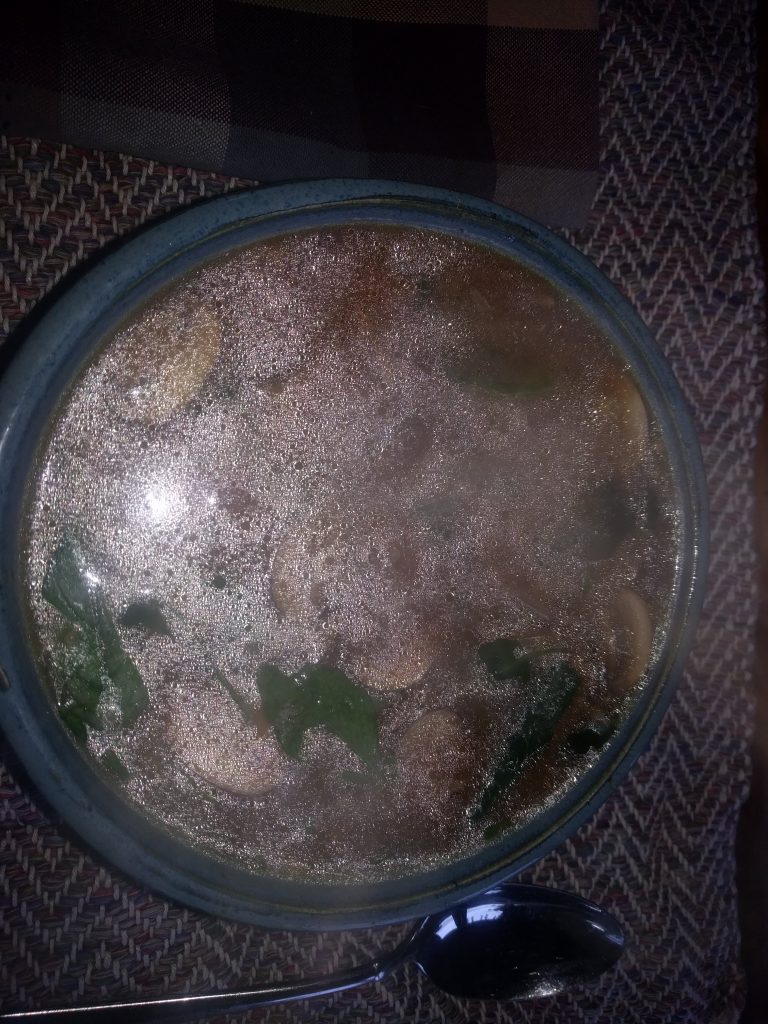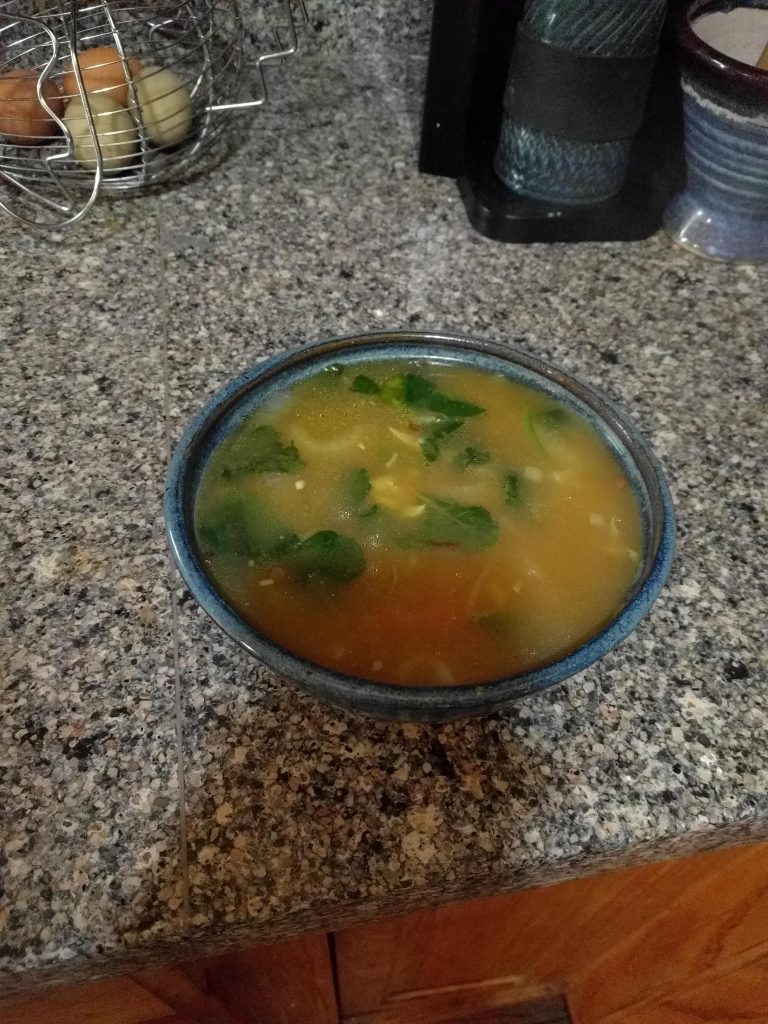This year’s garden has not been the success of past years. The peas gave us fresh peas to eat, but few made it to the freezer. The first crop of bush beans provided quite a number of meals fresh and some are in the freezer and the second crop is about to bloom. I hope the bean beetles are done with their work and will let this crop grow. This morning, I pulled the dry skins from the onions to prep them for storage. About 1/3 of the crop are already mushy and will go straight to the compost pile. A handful are salvagable if I use them quickly. But there are onions to go on the hardware cloth shelf in the non climate controlled part of the basement.

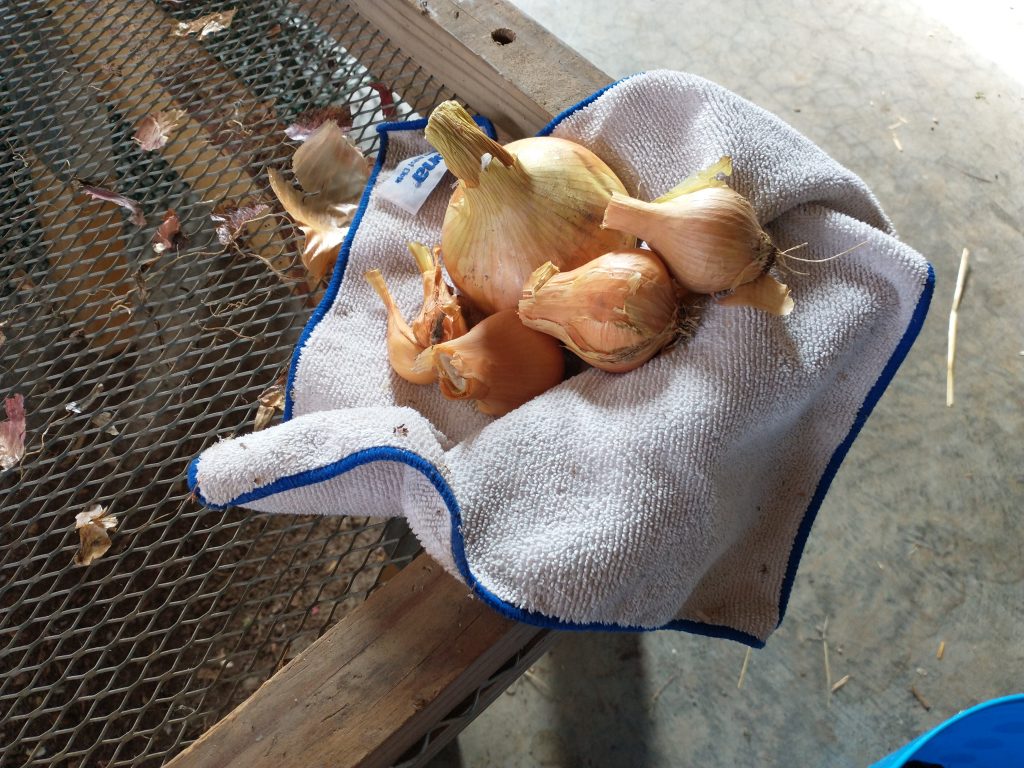
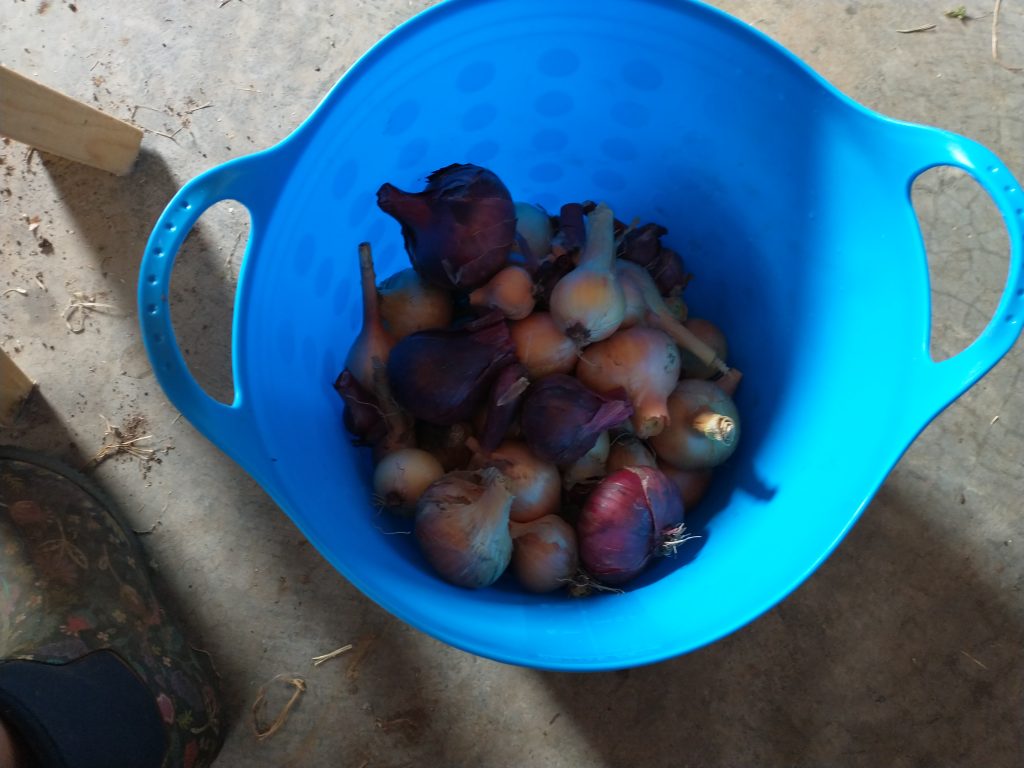
Last evening after dinner, I went out to weed and harvest what I could. The ground cherries are forming and beginning to drop and as they do, they are being husked and frozen until there are enough for a batch of jam. The tomatillos are the same, forming and freezing until enough are gathered for simmer sauce and Tomatillo/Jalapeno/Lime jam. I planted determinate tomatoes this year as I started them to be controllable in granddaughter’s garden. The six I gave them failed and they ended up with indeterminate ones purchased from the nursery to have to deal with, but that means all of my tomatoes will ripen at about the same time. As they begin to ripen, they too are being frozen to make the skins easier to remove and to save up enough to can in batches of pizza sauce, pasta sauce, or diced tomatoes. The bucket was about half full of those goodies and several cucumbers. This is the first year we have gotten useable peaches from our tree. I brought in a basket full of them to eat and to make a batch of peach jam. After lunch, the canner pot was lifted down from it’s high shelf, the peaches peeled and chopped and 4 half pints of jam made. While it was canning, 3 pints of garlic dill pickle slices were packaged and they followed in the canner.
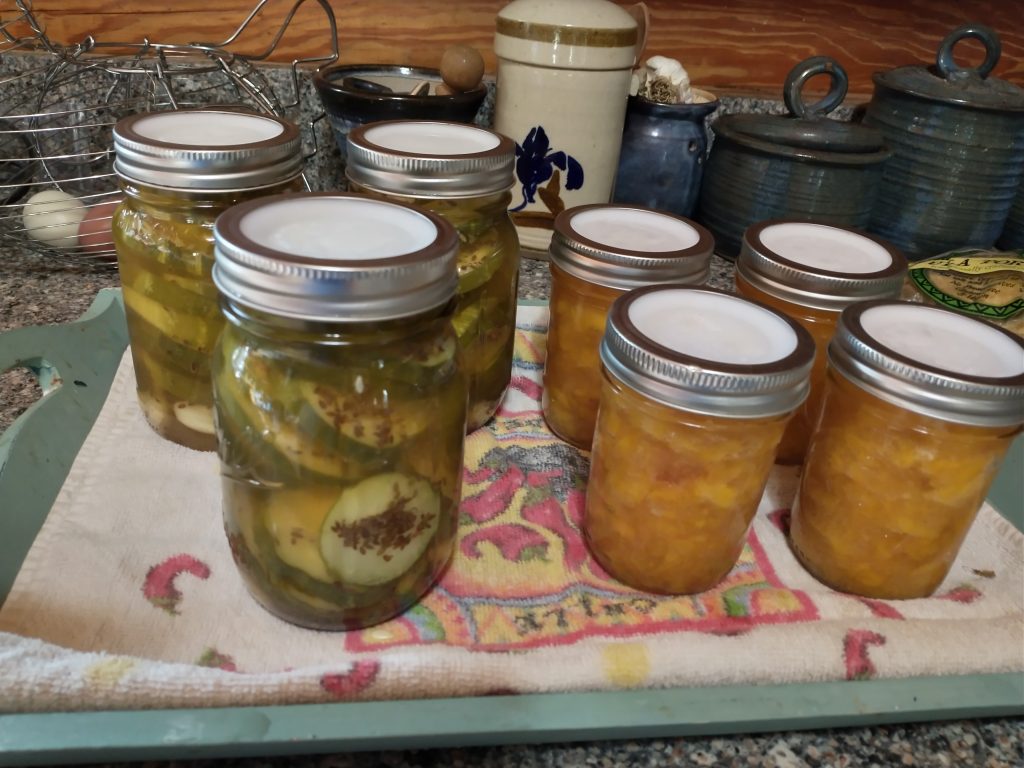
The popcorn is tasselling nicely and the squash underneath look healthy. They are a short vined mini hubbard style squash, but they are all developing long necks which makes me question whether they were properly packaged, but they are a winter squash and should keep well.
The one thing that is thriving is kale and hubby doesn’t really care for it.


